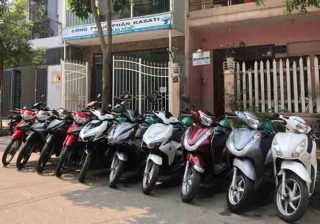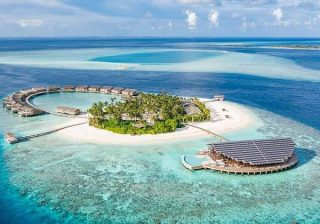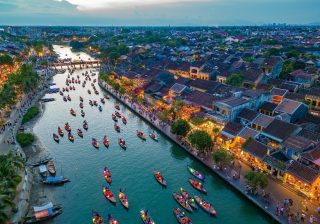Net zero tourism, aimed at minimizing carbon emissions, is rapidly gaining traction within Vietnam’s tourism industry as the country strives for a more sustainable future.
This push aligns with Vietnam’s commitment to achieving net zero emissions by 2050, a pledge made at the 2021 United Nations Climate Change Conference (COP26). While this marks a significant milestone in the development of a green economy, it also presents various challenges and opportunities for both the nation and businesses, as highlighted at the Green Economy Forum 2023 in Ho Chi Minh City.
As global momentum builds toward sustainable development, the tourism sector is increasingly adopting eco-friendly practices to achieve net zero, reducing carbon emissions through renewable energy and carbon offset initiatives.
However, reaching this ambitious goal is no easy feat, and this article will delve into the key strategies and challenges involved in the journey toward net zero tourism.
1. Key Strategies for Net Zero Tourism
1.1. Adoption of Renewable Energy Sources
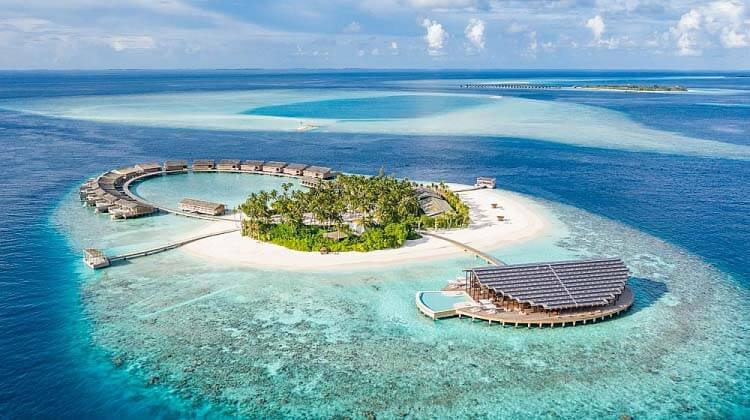
One of the most effective ways for the tourism industry to lower its carbon footprint is by shifting to renewable energy sources. Hotels, resorts, and other tourism-related businesses can invest in solar, wind, and geothermal energy. Renewable energy helps reduce reliance on fossil fuels, which are the primary contributors to greenhouse gas emissions. By powering operations sustainably, businesses can make significant strides toward net-zero tourism.
Eco-friendly resorts in destinations like the Kudadoo Maldives and Costa Rica have already made the shift by installing solar panels and wind turbines to provide clean energy.
1.2. Sustainable Transportation
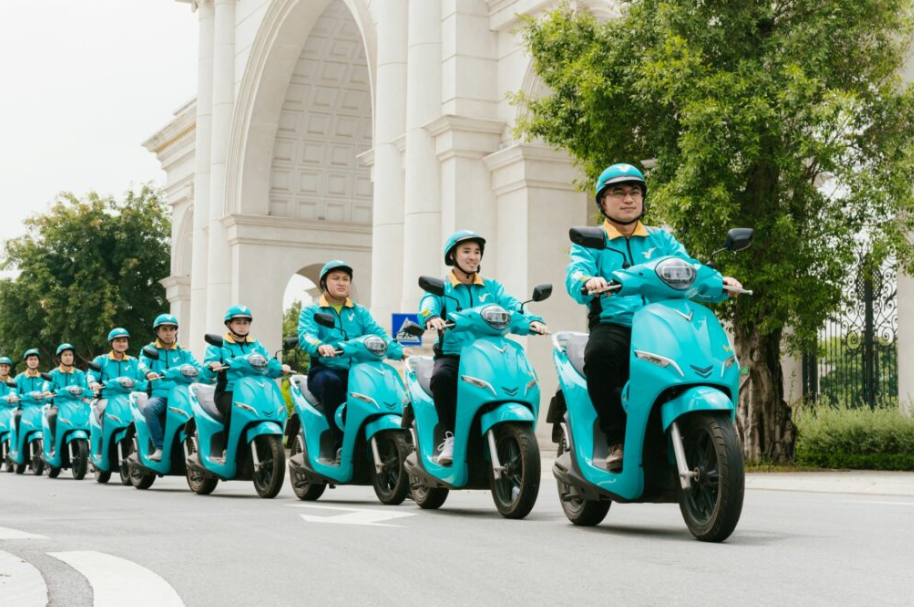
Transportation contributes a significant portion of the tourism industry’s emissions. To achieve net zero tourism, innovations in sustainable transportation are crucial. Encouraging the use of electric vehicles (EVs), investing in biofuels, and promoting the use of public transport and cycling are all effective ways to reduce emissions.
Vietnam’s public transport, including buses and trains, offers an affordable and eco-friendly way to explore the country. Walking or cycling through cities like Hoi An or Hanoi not only reduces carbon emissions but also allows you to experience Vietnam more intimately.
If you come to Da Nang, you can consider renting an electric motorbike for your sustainable travel from the NUI THANH TRAVEL, their number phone: +84 905 553 255
1.3. Carbon Offset Programs
Although reducing emissions should be the priority, carbon offset programs allow businesses to neutralize their remaining emissions by investing in projects that capture carbon, such as reforestation or renewable energy initiatives. Tourism companies can collaborate with carbon offset providers to give tourists the option to offset their carbon footprint when booking travel packages or accommodations.
If flying is unavoidable, offset your carbon emissions through reputable organizations. Supporting projects like forest conservation in Vietnam or renewable energy initiatives can help balance out your travel impact. Sites like Cool Effect or Terrapass provide simple options to offset the carbon footprint from your flights.
1.4. Eco-Friendly Infrastructure and Design
Sustainable building practices are essential to reducing the environmental impact of tourism infrastructure. Green buildings that utilize sustainable materials, optimize water and energy use and minimize waste production play a critical role in achieving net zero tourism. Incorporating green roofs, water recycling systems, and energy-efficient designs helps hotels, resorts, and attractions significantly reduce their emissions.
Many new eco-lodges and resorts are now built using sustainable materials like bamboo, recycled wood, and natural stone, minimizing the need for concrete, which has a high carbon footprint.
1.5. Waste Reduction and Circular Economy Practices
Tourism generates vast amounts of waste, from single-use plastics to food waste. Reducing waste and embracing circular economy practices—where resources are reused and recycled rather than discarded—can make a considerable difference in the journey to net zero tourism. Businesses can reduce food waste by donating surplus to local communities or composting, and they can eliminate single-use plastics in favor of reusable alternatives.
Several eco-friendly resorts have adopted zero-waste practices, ensuring that food scraps are composted and single-use plastics are banned. And several travelers can help reduce plastic waste by carrying reusable items such as water bottles, shopping bags, and utensils.
2. Challenges in Achieving Net Zero Tourism
2.1. High Initial Costs
Transitioning to renewable energy and adopting sustainable practices often requires significant upfront investment, which can be a barrier, especially for small businesses in the tourism sector. Installing solar panels, upgrading to energy-efficient technologies, and investing in carbon offset programs require financial resources that not all businesses have at their disposal.
2.2. Lack of Industry-Wide Regulations
Another challenge is the lack of consistent, industry-wide regulations or frameworks for measuring and reducing emissions. While some countries have stringent environmental regulations, others lag, creating an uneven playing field for tourism businesses trying to adopt sustainable practices.
2.3. Consumer Awareness and Behavior
Tourists themselves play a significant role in the success of net zero tourism. However, many travelers may not prioritize sustainability when planning their trips. Raising awareness and educating consumers about the importance of reducing their carbon footprint is crucial. Tourists must be encouraged to choose eco-friendly options, whether it’s staying in green hotels, using sustainable transport, or participating in carbon offset programs.
2.4. Technological Limitations
Although advances in renewable energy and sustainable transportation are being made, many technologies are not yet widely available or affordable. For instance, while electric planes and sustainable aviation fuel (SAF) are being developed, they are not yet commercially viable on a large scale. This creates a significant barrier to reducing emissions from air travel, which is a major contributor to tourism’s carbon footprint.
2.5. Balancing Growth and Sustainability
The tourism industry is a major economic driver in many regions, but rapid growth can often come at the cost of environmental degradation. Striking a balance between growing tourism and maintaining environmental sustainability is a challenge many destinations face. Over-tourism, in particular, puts stress on local ecosystems and resources, hindering the industry’s ability to achieve net zero tourism.
3. The Path Forward
Despite the challenges, net zero tourism is a goal worth striving for. Governments, businesses, and tourists must work together to create a more sustainable future for the industry. Governments can play a key role by providing incentives and funding for sustainable initiatives, while businesses must adopt eco-friendly practices and embrace innovation. Ultimately, consumers will also need to shift their preferences toward more sustainable travel options.
Net zero tourism is both a necessary and achievable goal for the industry, but it requires a collective effort from all stakeholders involved. By adopting renewable energy, sustainable transportation, eco-friendly infrastructure, and waste reduction strategies, tourism businesses can pave the way for a more sustainable future. While challenges such as high costs and technological limitations remain, the commitment to reducing the tourism sector’s carbon footprint is growing. As both industry players and travelers become more conscious of the impact of their actions, achieving net zero tourism becomes an attainable reality.
With these insights, you surely have exciting plans for your visit to Hanoi, right?
If you intend to travel or look for hotels in Hoi An and Da Nang that are both luxurious and budget-friendly, feel free to contact V’Way immediately via phone number/WhatsApp at +84 905 55 32 55, or our email at [email protected], or visit the V’Way homepage https://vwaytour.com for more options with special prices!
Articles by tags
Recent Posts
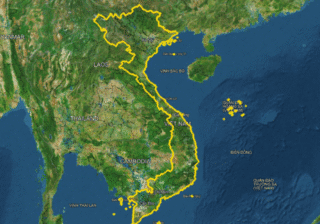
Map of Vietnam: A Comprehensive Travel Guide
Vietnam is a captivating country in Southeast Asia, known for its breathtaking landscapes, rich history, and vibrant culture. Whether you…

Discover Danang Countryside: Hidden Gems & Experiences
If you’re looking to escape the bustling streets of the city and dive into the heart of Vietnam’s natural beauty…

Hoi An Cooking Class: Unlock the Secrets of Vietnamese Cuisine
Hoi An, a UNESCO World Heritage town, isn’t just a visual feast with its lantern-lit streets and ancient architecture—it’s also…

Things to Do in Da Nang: Top 14 Exciting Travel Guides!
Da Nang, Vietnam's coastal gem, offers visitors a mix of vibrant urban life, stunning natural scenery, rich culture, and modern…


